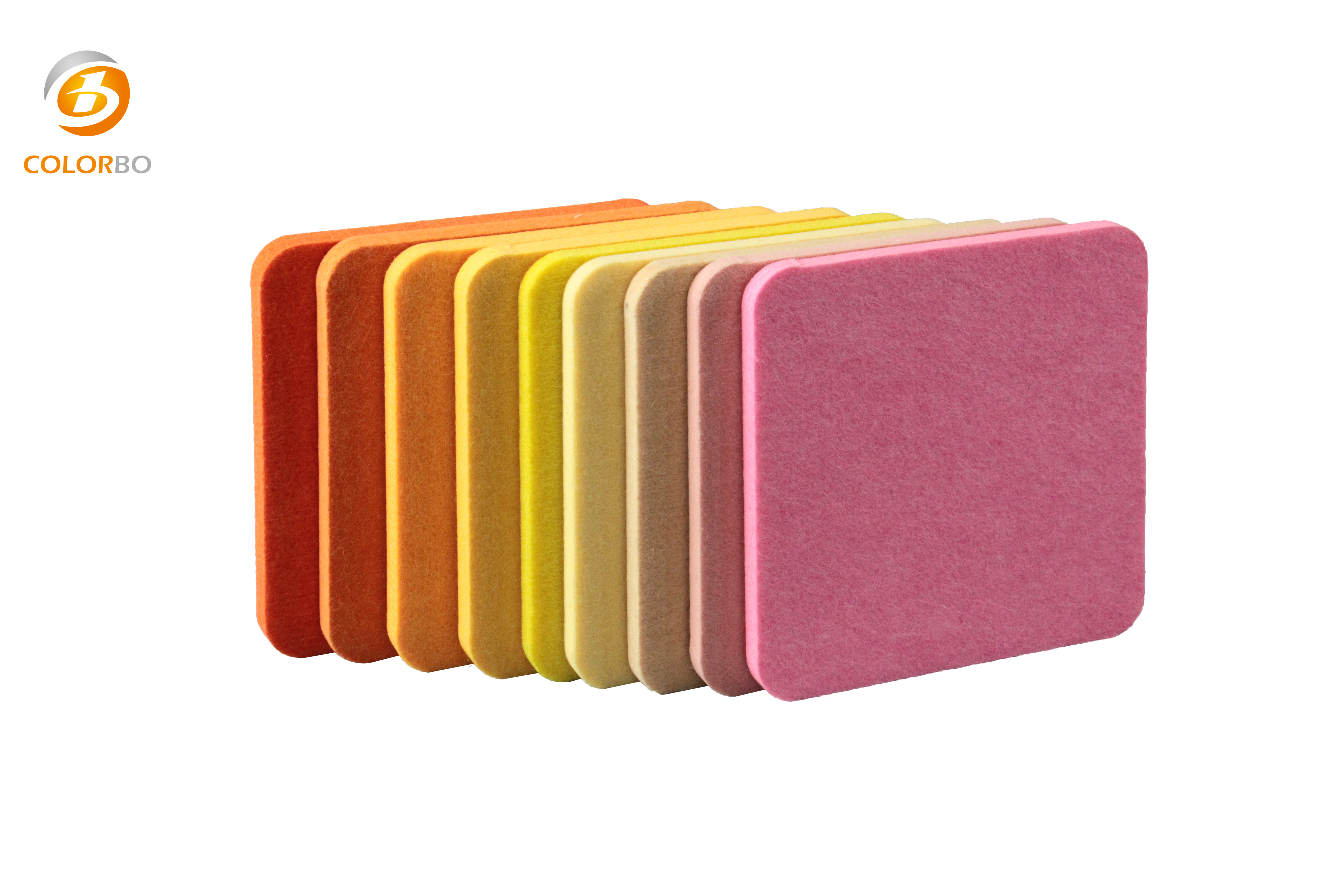Views: 0 Author: Site Editor Publish Time: 2025-06-13 Origin: Site








In the realm of modern architecture and interior design, achieving both aesthetic appeal and functional efficiency is paramount. One of the materials that have gained significant attention in this respect is the Acoustic PET Panel. These panels not only enhance the visual dynamics of a space but also significantly improve its acoustic properties. This article delves deep into what an acoustic PET panel is, its composition, benefits, and applications in various settings.
An Acoustic PET Panel is a sound-absorbing panel made from Polyester Fiber, commonly referred to as PET (Polyethylene Terephthalate). These panels are designed to reduce unwanted reverberations and echo in indoor environments, enhancing sound quality and clarity. The core material, PET, is derived from recycled plastic bottles, making these panels an eco-friendly solution for sound management.
Acoustic PET Panels are manufactured through a process that involves heating and compressing polyester fibers. The fibers bond together without the need for additional adhesives, resulting in a lightweight yet sturdy panel. The use of recycled PET bottles not only reduces environmental waste but also contributes to sustainable building practices. The panels can be molded into various shapes and sizes, offering versatility in design and application.
The adoption of Acoustic PET Panels offers a multitude of benefits that cater to both environmental considerations and acoustic performance:
These panels are highly effective in absorbing sound across a wide range of frequencies. They help in controlling sound reflections within a space, thereby reducing noise pollution and enhancing speech intelligibility. This makes them ideal for use in offices, educational institutions, and commercial spaces where sound clarity is crucial.
Made predominantly from recycled PET materials, Acoustic PET Panels contribute to environmental sustainability. The recycling of plastic bottles into usable building materials helps in reducing landfill waste and conserves resources. This aligns with global efforts towards sustainable development and responsible resource management.
Acoustic PET Panels are available in various colors, textures, and shapes. They can be customized to fit the aesthetic requirements of any space. Whether it's a vibrant educational environment or a professional corporate setting, these panels can be tailored to enhance the visual appeal while serving their functional purpose.

In open-plan offices, controlling noise levels is essential to maintain productivity. Acoustic PET Panels can be used as partitions, wall panels, or ceiling fixtures to absorb excess sound and create a more conducive working environment.
Classrooms and lecture halls benefit from reduced reverberation and improved sound clarity. Installing Acoustic PET Panels enhances the learning experience by minimizing distractions caused by ambient noise.
Restaurants, hotels, and retail stores aim to offer pleasant experiences for their customers. By integrating Acoustic PET Panels into the interior design, these spaces can manage sound levels effectively, enhancing customer satisfaction.
The installation of Acoustic PET Panels is straightforward due to their lightweight nature. They can be attached to walls or ceilings using adhesives, mechanical fasteners, or suspended systems. Maintenance is minimal, as the panels are durable and can be cleaned with a simple dusting or vacuuming.
Traditional acoustic materials like foam and fiberglass have been widely used; however, Acoustic PET Panels offer several advantages:
Unlike fiberglass, PET panels do not shed fibers that can be harmful if inhaled. They are non-toxic and safe for use in environments frequented by children and sensitive populations.
Acoustic PET Panels are resistant to moisture, mold, and mildew, which enhances their longevity. They maintain their structural integrity and appearance over time, reducing the need for frequent replacements.
The industry is witnessing continuous innovations in the development of Acoustic PET Panels:
Research and development are leading to panels with enhanced sound absorption capabilities. This includes tuning panels for specific frequency ranges and creating composite materials for better performance.
The integration of technology allows for the embedding of LEDs and interactive elements within the panels. This adds functionality such as mood lighting and interactive displays, merging acoustic management with technological convenience.
Several projects have successfully implemented Acoustic PET Panels:
A leading tech company renovated its headquarters by installing Acoustic PET Panels in collaborative areas. This resulted in a noticeable improvement in speech clarity and employee productivity.
A university library integrated PET panels into its design, creating quiet study zones. Students reported a more conducive learning environment with reduced background noise.
Acoustic PET Panels represent a harmonious blend of aesthetic design, environmental responsibility, and acoustic efficiency. By opting for these panels, architects and designers can address the acoustic challenges of modern spaces while contributing to sustainability goals. The versatility and benefits of Acoustic PET Panels make them a valuable addition to any interior environment seeking to enhance acoustics without compromising on style.





